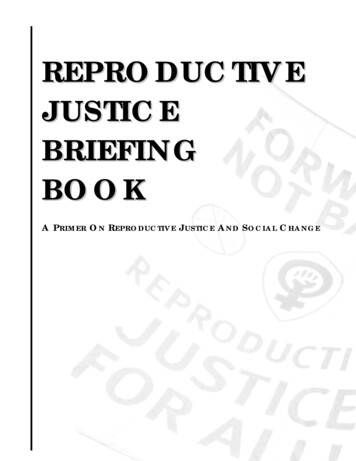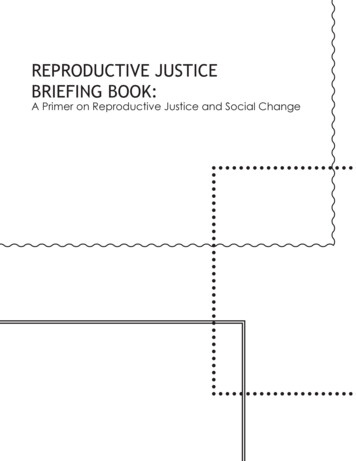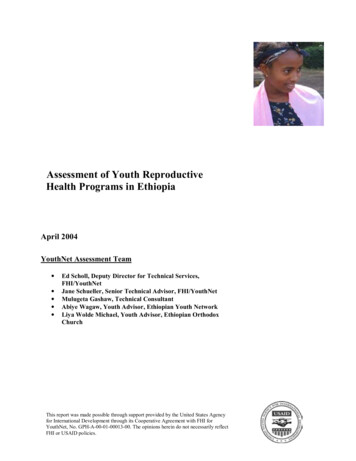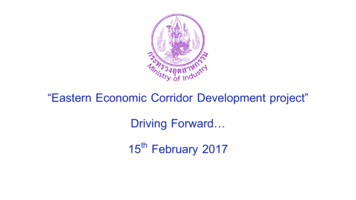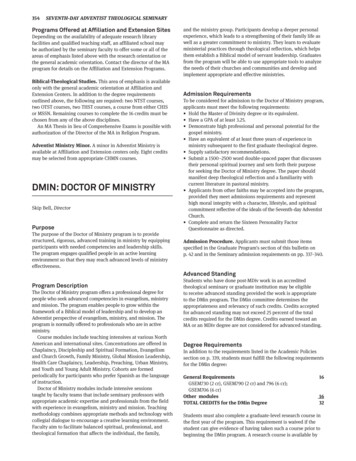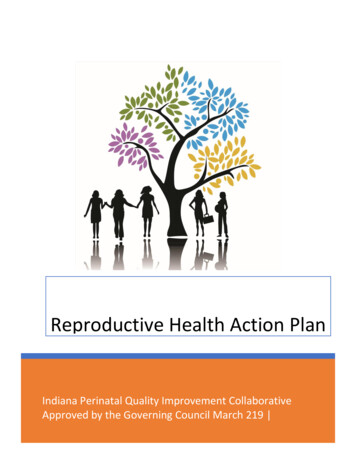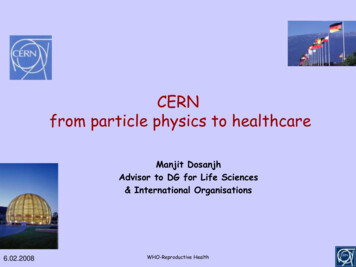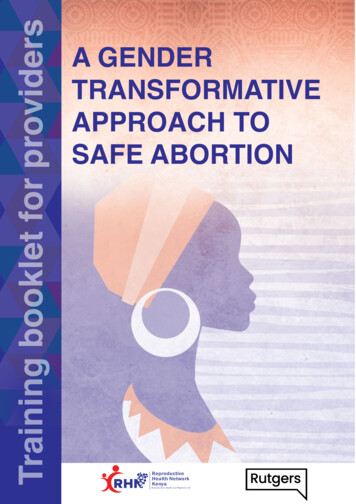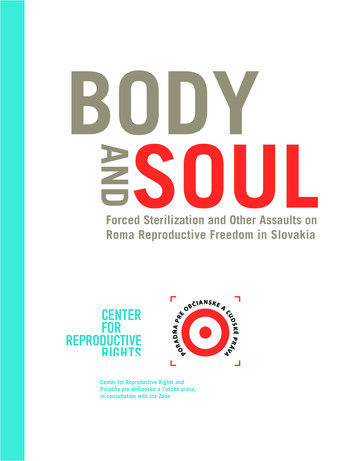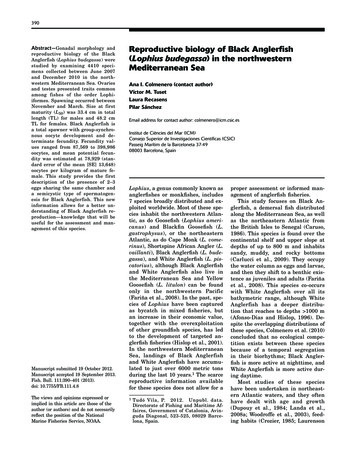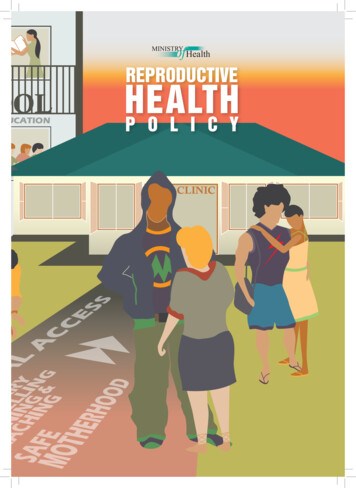
Transcription
OOLEDUCATIONMINISTRYHealthREPRODUCTIVEHEALTHP O L I C YCLINIC
Ministry of Health, Republic of the Fiji Islands.ISBN 978-982-98057-1-3
Republic of the Fiji IslandsReproductive Health PolicyMINISTRYHealth
A C K N O W L E D G E M E N T SThe development of the Reproductive health policy involved consultations and meetingswith a broad range of stakeholders to identify the issues that could be addressed at theNational levelThe Ministry of Health wishes to acknowledge the contributions of other government organizations, nongovernment organizations and regional and international organizations.We are also indebted to the contributions of individuals that have contributed tremendously to the development of the policyDr Neil Sharma – Minister of HealthDr Salanieta Saketa – Permanent Secretary for HealthDr Josefa Koroivueta – MOHDr Josaia Samuela – MOHDr James Fong – CWMHDr Tupou Wata – CWMHDr Wame Barivilala – UNFPAMs Virisila Raitamata – UNFPADr Eliab Sombe – UNICEFDr Seng Sohepep – WHODr Rufina Latu – WHODivisional Heads and their teams:Dr Frances Bingwor, Dr Torika Tamani, Dr Samuela Korovou, andDr Dave WhippyThe ministry of health wishes to acknowledge the financial support from UNFPA, WHOand the Fiji Government for the activities relating to the development of the policy.
C O N T E N T SCHAPTER 1 INTRODUCTION71.11.21.31.4PURPOSE OF THE POLICY DOCUMENT7BACKGROUND7ORGANISATION OF REPRODUCTIVE HEALTH SERVICES8CHALLENGES AND THE ROLE OF POLICY DIRECTION AND SUPPORT81.5STRUCTURE OF THE POLICY DOCUMENT9CHAPTER 2 POLICY STATEMENTS FOR REPRODUCTIVE HEALTH2.12.22.310VISION, MISSION AND GOAL10POLICY STATEMENTS10KEY POLICY AREAS OF REPRODUCTIVE HEALTH11SECTION 1 POLICY STATEMENTS ON MOBILISING RESOURCES TO SUPPORT SEXUALAND REPRODUCTIVE HEALTHSECTION 2 POLICY STATEMENTS ON INFANT & CHILD HEALTH1113SECTION 3 POLICY STATEMENTS ON ADOLESCENT HEALTH AND DEVELOPMENT 17SECTION 4 POLICY STATEMENTS ON MATERNAL AND NEONATAL HEALTH20SECTION 5 POLICY STATEMENTS ON FAMILY PLANNING AND POST ABORTION SERVICES23SECTION 6 POLICY STATEMENT ON INTEGRATION AND LINKAGES OF STI-HIV WITH SRH SERVICES262.428CROSS CUTTING STRATEGIESNATIONAL REPRODUCTIVE HEALTH WORK PLAN31GLOSSARY36
Reproductive Health PolicyChapter 1 Introduction1.1PURPOSE OF THE POLICY DOCUMENTThe purpose of this Policy & Strategy document is tooutline policy statements of the Ministry of Health insupport of Reproductive Health including maternaland neonatal health, demonstrating its contributionto the achievement of improved health and wellbeing in Fiji. It maps out a framework of key strategicareas and activities to be implemented and identifiesmechanisms for improving the effectiveness andefficiency of programmes and services. The policydocument represents national commitments tosupport reproductive health care at the highest leveland calls for responsive action at all levels of thehealth care delivery.The development of the Reproductive Health Policyprovides a unique opportunity to redefine commonvision and mission, revisit goals and objectives,identify programme priorities, assess emergingissues, reprioritise areas for action; and to establisha roadmap for strengthening the delivery of a resultsbased programme. The policy reaffirms the needfor adequate resources in order to implement aneffective programme and deliver quality services. Italso emphasizes the importance of strengtheningthe management and coordinating mechanismsto facilitate the achievement of both curative andpreventive aspects of reproductive health as reflectedin the vision and mission of the programme.1.2BACKGROUNDWith a population of over 900,000, Fiji ranks secondto Papua New Guinea in terms of population sizeamong Pacific island countries. In the last decade,the net population growth rate has decreased to 1.8per annum while the total fertility rate has reached 2.7and crude birth rate has stabilised at 21 per 1000.The total number of annual live births was 18,944(MOH Annual Report 2008); most of them are bornin hospital facilities.The contraceptive prevalence rate has remainedaround 45% while the level of unmet need for familyplanning remains relatively high. Adolescent fertilityrate has slightly decreased in the last five years andhas reached 50 per 1000, while births to teenagemothers account for 10% of all births. Maternalmorbidity data is high and largely linked to highincidence of diabetes, other NCDs in pregnancy,premature birth, anaemia. Fiji’s maternal mortalityratio has stabilised at 30-40 per 100,000 live birthsin the last decade. Neonatal morbidity and mortalityrates are low (15 per 1000 births), largely due toprematurity and severe infection. Infant mortality ratehas also remained low below 20 per 1000 live births.STI rates are high in Fiji and assume a majorcontributing factor to infertility. Partially treated oruntreated syphilis during pregnancy has resulted inincreasing numbers of neonatal syphilis. Althoughthe numbers of HIV are small, there is speculationthat the recorded diagnosed cases represent onlya fraction of the actual numbers. Abortion is notlegalised in Fiji; however, cases of unsafe abortionhave presented to health facilities indicating the lackof contraceptive use in the context of unmet needs forfamily planning. Cancer of the Cervix has been themost common cancer in Fiji over the past decade.Annually, there are approximately 109 new cases ofcervical cancer with an estimated incidence of 51.3per 100,000. Cervical cancer is the highest causeof cancer deaths in Fiji. The burden of disease, andmortality attributable to cervical cancer, is higher inFijian women than Indo-FijiansMaternity Services in Fiji are fairly well developed.While antenatal care coverage has reached morethan 95% and many achieve more than four (4) visitsper pregnancy, ensuring better antenatal care qualityin terms of early booking (less than 10% of womenbooking in the first trimester) and more goal orientedantenatal care remains a priority.7
Reproductive Health Policy1.3 O RGANISATION OFREPRODUCTIVE HEALTHSERVICESFiji has a well developed health care system andinfrastructure. Reproductive Health (RH) has awell-defined clinical/curative component and apublic health/preventive component. Linkagesand integration between these sections are clearlysupported by the Ministry. The government of Fijiacknowledges the contribution of reproductivehealth programme in the achievement of MDG’s, inparticular the health-related MDGs (MDG 4, 5, 6).Health services and programmes are delivered via adecentralised approach through three health divisions– Central/Eastern, Northern and Western Divisions.The types of health facilities comprise the following: Divisional HospitalsSub-divisional HospitalsMaternity HospitalsHealth Centres Nursing Stations -316276102In addition, RH services are also provided by theprivate sector comprising Suva Private Hospital andabout 75 registered General Practitioners. A fewNGOs also provide reproductive health services, suchas Family Health Association of Fiji, Fiji Red Cross,Marie-Stopes International, AIDS Task Force of Fiji.Reproductive health services in Fiji covers a wide areaof health care, the main ones include: S afe Motherhood – encompasses maternalcare and neonatal care Infant and child care Adolescent health care Family Planning and Prevention of Abortion STI-HIV prevention and management, and BasicInfertility services Management of gynaecological morbidity– including reproductive tract cancers & infections.The move towards decentralisation of programmesand services under the recent health reform aimsto build infrastructure, capacity and resources at8subdivisional level to be able to deliver a widespectrum of RH services as adequately as possiblewithin the constraints of available resources. Howeverin reality, resources have been stretched and this oftencompromises quality of health services, resulting ininadequate services.1.4 C HALLENGES AND THE ROLEOF POLICY DIRECTION ANDSUPPORTDespite the good intentions of decentralisation, Fijicontinues to face significant challenges and constraintsthat impede the delivery of quality reproductive healthservices at all levels of the health care system. Theseare largely related to staffing and human resourcesshortage, inadequately equipped facilities, weakhealth systems, and inadequate coordination andmanagement of programmes and services. Lack ofconsistent on-going reviews and research relatedto reproductive health contributes to inadequateevidence-based programming and poorly-informedpolicy formulation. This policy document calls foraction to address these challenges and constraints.Two main action areas for policy direction to supportthe implementation and delivery of RH programmesand services are highlighted:(1) Provision of Adequate ResourcesIn order that resources are adequately mappedout to facilitate delivery of quality services, thefollowing statements apply: The functions of each category of healthfacility and services to be provided at eachlevel of facility are clearly defined andcommunicated.The roles of staff assigned to man thefacilities are clearly defined and that staff areadequately skilled to deliver these functionsand roles.The facilities are adequately equippedwith supplies, medicines, commodities andequipment to be able to deliver the functionsprescribed for each facility.
Reproductive Health Policy Mechanisms for ongoing capacity building,continuing education and supportivesupervision are established and strengthenedto maintain staff morale, knowledge andskills, and help retain human resources.(2) Establishment of effectiveManagement, Coordination andSupervisory systems.In order to support the functions of each healthfacility (hospital level to a nursing station),the following need to be established andstrengthened: Clearly defined management,coordination and supervisory roles areeffectively communicated to relevant staffand the health facility team.Staff in position of managementand supervision are capable of andaccountable for the effective delivery offacility functions.Clearly defined communication lines arein place to enhance coordination.Established patient referral system andcontinuity of care from one facility toanother, and between curative servicesand preventive/public health services.Mechanisms for ongoing reviews &monitoring and management meetingsare in place to support effectiveprogramme coordination and health caredelivery.1.5 S TRUCTURE OF THE POLICYDOCUMENTThis policy document was developed throughconsultations with senior staff of the Ministry ofHealth with assistance from UNFPA, UNICEF andWHO. A workshop conducted in Sept 2009 led tothe formulation of the first draft. The second draftwas produced following a second workshop heldin Nov 2009 which allowed staff to review the firstdraft. The second draft also incorporated the findingsof the EmNOC survey, particularly useful in definingthe categorical functions of health facilities, necessarytechnical skills for carrying out these functions,roles and types of health staff necessary to man thefacilities, and a mapping of the equipment, suppliesand commodities necessary to operationalise thefunctions of each facility.The document includes six (6) component areasaligned to the priority RH action areas for Fiji. Eacharea has a policy statement which translates into anumber of key strategic actions. A number of keyactivities are outlined under each strategic area. Thesix component areas include:1 Reproductive and Sexual Health2 Safe Motherhood – Maternal and NewbornCare3 Infant and Child Health Care4 Adolescent Health5 Family Planning and Fertility services6 Sexually Transmitted Infections, HIV andReproductive Tract Cancers9
Reproductive Health PolicyChapter 2 Policy Statements for Reproductive Health2.1 VISION, MISSION AND GOALVISIONThe achievement of optimum reproductivehealth for all people in FijiMISSIONTo provide comprehensive and integratedreproductive health services for all peoplethroughout the life cycle (women, men, youngpeople, children and infants)GOALSGoal 1 To contribute to the reduction ofchildhood morbidity and mortality by two thirdsbetween 1990 and 2015, this contributing tothe achievements of MDG 4.Goal 2To contribute to the reduction of maternalmorbidity and mortality by three quartersbetween 1990 and 2015, thus contributing tothe achievements of MDG 5.2.2POLICY STATEMENTS(1) A ll women, men, young persons and children haveaccess to promotive, curative and preventative RHservices to protect, and improve their reproductivehealth throughout the life cycle.(2) A ll women have quality services during pregnancy,labour and delivery to ensure successful pregnancyoutcomes by making quality maternal andnewborn services more available and accessible.(3) All infants and children have access to both curativeand preventive paediatric services to protect andsafeguard their health, with particular reference tothe most common causes of infant and childhoodmorbidity and mortality including respiratoryillness, diarrhoeal disease and malnutrition.(4) Y oung people inclusive of adolescents and youthhave access to and make use of youth-friendlyservices to help them make responsible choicesthat protect and safeguard their health, withparticular reference to prevention of unplannedearly pregnancy, STIs/HIV and sexual abuse.(5) A ll couples and individuals have access toquality Family Planning services (including fertilityservices) and post abortion services(6) All women, men, young persons and children have access to promotive, curative and preventative servicesthat protect them from STIs including HIV10
Reproductive Health Policy2.3 KEY POLICY AREAS OF REPRODUCTIVE HEALTHSECTION 1 POLICY STATEMENTS ON MOBILISING RESOURCES TO SUPPORT SEXUAL ANDREPRODUCTIVE HEALTHSoliciting policy support in setting the directions for the implementation of the national reproductive healthprogramme is crucial in making progress towards achievement of MDG 4 and 5. To provide comprehensiveand integrated reproductive health services for the people of Fiji, it is essential that the necessary resources,including human resources and staffing are available to implement the programmes and services and fulfillthe plans of the Ministry. The policy calls for allocation of necessary resources at all levels of the health caresystem.All women, men, young persons and children have access to healthpromotive, curative and preventative RH services to protect, (safeguard) and improve theirreproductive health throughout their lives.POLICY STATEMENTSTRATEGIC AREA 1 A highly trained, up-to-date, sensitive and effective RH workforcedelivering to all sectors of the community.STRATEGIC AREA 2 T heprovision of comprehensive and integrated RH services, withemphasis on linkages with HIV/STI services, including cancer preventionand treatment, fertility services and other emerging areas.STRATEGIC AREA 3 G enderissues in the RH sector are adequately catered for and staffs areappropriately trained to provide sensitive, responsive services.STRATEGIC AREA 4 R HHealth Supplies and commoditiesACTIVITIES UNDER STRATEGIC AREA 1123456Workforce Development and Support Review of current RH services in all major hospitals through the EmONC survey withidentification of areas for workforce improvement Adequate staffing of all health facilities with appropriately trained personnel, supportedby fair and transparent working conditions and remuneration Capacity building and in-service training for all clinical and RH staff in hospitals, healthcentres and clinical settings with a view to establishment of a process for periodicrecertification (e.g. in EmONC skills) Dissemination of standard protocols and treatment guidelines on the common RH /Obstetric /Gynaecology conditions and problems to ensure staff are consistent in the(service delivery)Establishment of an effective referral and follow-up system to enhance continuity of care Development of a practical Monitoring and Evaluation plan – including regular review ofRH service data for informed decision making and evidence-based programming.11
Reproductive Health PolicyACTIVITIES UNDER STRATEGIC AREA 212345Comprehensive and Integrated RH Services T rain RH personnel in various settings on the necessary skills to integrate HIV/STI withother SRH services.R eview of current RH cancer preventative and curative services with a focus onincorporating low technology based strategies to facilitate extension of these services tomarginalized population.G reater partnerships and coordination with the Fiji Cancer Society and similar NGOs inthe advocacy for greater awareness of RH cancers.E stablishment and advocacy of fertility services to be set up in each Divisional Hospital,with emphasis on confidential and technology appropriate services.D evelopment of a practical Monitoring and Evaluation plan – including regular review ofRH service data for informed decision making and evidence-based programming.ACTIVITIES UNDER STRATEGIC AREA 3 Gender Issues12345612R eview of current Gender Based Violence (GBV) response services and programmes formen to identify areas for improvementAdvocacy for the importance of gender equality in the health and development of FijiC apacity building and in-service training for all staff involved in the care of victims ofGBV, including training on the forensic role of health workersE stablishment of a network for the care and support of women and girls who experienceviolence of GBVProvision of effective and responsive RH services for men in selected settingsDevelopment of a practical Monitoring and Evaluation plan
Reproductive Health PolicyACTIVITIES UNDER STRATEGIC AREA 4 RH Health Supplies and CommoditiesI dentification of a minimum package of essential SRH interventions, the level at whichthese services will be provided and the list essential RH commodities that will beprovided at each levels of health care.2 Establish realistic lead times during the planning cycles from forecasting to the receipt ofRH supplies3 Develop multi-year culture of planning with ( 2- 3 years) forecasting budgets for theprovisions of key RH essential supplies and commodities4 Strengthen the procurement process at FPBS through Capacity Building, procurementmainstreaming and integration of procurement work with finance work5 Finalise an annual RH procurement plan aligned to the findings of the 2010 EmONCassessment findings6 Explore long term procurement options with UN agencies using the third partprocurement mechanisms or UN web buy mechanisms.7 Strengthen warehousing management business practices through appropriateaccreditation of warehousing standard operating policy and procedures.8 Conduct Warehouse Capacity building with key Warehouse staff at FPBS.9 Ensure proper inventory control procedures are in place at all service delivery points.10 Establish a reliable ordering standard operating procedure of replenishment from FPBSthat is simple, practical that encourages regular, accurate stock counting at ALL servicedelivery points.11 To develop process, structural and impact indicators as a framework of assessing RHServices and Commodities.1CROSS-CUTTING ISSUES123456 Resources are secured to facilitate the implementation of the activities under each keystrategic area in order to realise the policy statement. Resources include: humanresources and related HR issues, facilities and equipment, supplies and commodities Reproductive Health Commodities and Supplies (RHCS): ensuring all facilities areadequately resourced through well established ordering, transportation, storage anddelivery processes Integration and linkages between MOH, NGOs and development partners for strongerpartnership at all levels of implementation engaging sector-wide approaches Apply the principles of results-based approach in Monitoring & Evaluation frameworksDocument lessons learned and best practices as a tool for evidence-based programming Partner agencies and donor community to engage in more effective coordination atnational level.13
Reproductive Health PolicySECTION 2 POLICY STATEMENTS ON MATERNAL AND NEONATAL HEALTH“Making Pregnancy Safer (MPS)” or Safe Motherhood aims to protect the health of mothers duringpregnancy, childbirth and postpartum period and to ensure healthy neonates. The policy calls for action andallocation of necessary resources to provide services in a comprehensive and integrated manner. This willhelp reduce maternal and neonatal morbidity and mortality, thus contributing towards the achievement ofMDG 5.Improve Pregnancy and Neonatal Outcomes by making qualityMaternal and Newborn services more available and accessible.POLICY STATEMENTSTRATEGIC AREA 1Ensure every pregnant woman is provided with quality antenatal careSTRATEGIC AREA 2Ensure every woman has skilled professional at deliverySTRATEGIC AREA 3Provide access to basic and comprehensive emergency obstetric careSTRATEGIC AREA 4 Facilitate Access and Availability of Effective Neonatal Care and Postnatal careACTIVITIES UNDER STRATEGIC AREA 1 1 P romote the early booking of mothers23456714before 12 weeks with emphasis on most at-riskpopulations, e.g. poor, adolescents, single mothers, women in remote rural areas Promote that mothers attend at least 4 ANC clinics before delivery Prevent transmission of syphilis, HIV, and other STIs, etc; from parent to child duringpregnancy Promote increased male participation in antenatal, intra-partum and postnatal care Standardise quality of antenatal care at all facilities Revise policy for Pap smear screening in antenatal clinicsProvide basic laboratory and radiology services at all subdivisional hospitals
Reproductive Health PolicyACTIVITIES UNDER STRATEGIC AREA 212345678Promote deliveries at health facilities with skilled health professionalsFacilitate prompt referrals of high risk cases to divisional hospitals; Ensure the presence of a skilled birth attendant at delivery for those deliveries not atfully equipped health facilities;Provide clean delivery kits to skilled birth attendants for use in remote areas;Provide incentives to keep skilled birth attendants (SBA) in rural and remote areas; Review current regulations and policies on MNCH (Maternal and Neonatal ChildHealth) and develop coordinated MNCH framework; Facilitate networking amongst health facilities in upskilling health care workers throughclinical attachments at divisional hospitals and outreach programmes; Ensure that all health centres are staffed with a SBA in providing skilled obstetric andneonatal care.ACTIVITIES UNDER STRATEGIC AREA 3123456 Develop a system for the ongoing upskilling of primary health care personnel inemergency obstetric and neonatal competency and skills; Develop subdivisional hospitals to meet basic and/or comprehensive obstetric carestandards, Review and strengthen communication and referral strategies amongst all levels of thehealth system in view of high-risk cases;Conduct annual national audits of maternal and perinatal morbidity and mortalityReview PHIS/PATIS to ensure collection of minimum core data for RH indicatorsReview and standardise clinical guidelines and protocolsACTIVITIES UNDER STRATEGIC AREA 4 Provide regular upskilling for staff working at postnatal and newborn units in newbornresuscitation and clinical assessment to recognize danger signs2 Develop appropriate post natal and newborn care package for the care of newbornsand post natal mothers3 Develop policies for strengthening postnatal clinic and MCH attendance at regular 1week and 6 week intervals4 Revise Pap smear policy to account for women attending PNC or MCH clinics115
Reproductive Health PolicySECTION 3POLICY STATEMENTS ON INFANT & CHILD HEALTHProtecting the health of infants and children from common illnesses will support their survival, growth anddevelopment to full potential. The policy calls for action and allocation of necessary resources to providecomprehensive and integrated services for infant and child health. This will help to reduce neonatal, infantand childhood morbidity and mortality by two thirds between 1990 and 2015, thus contributing towards theachievement of MDG 4.All infants and children have access to both curative and preventivepaediatric services to protect and safeguard their health, with particular reference to the mostcommon causes of infant and childhood morbidity and mortality including respiratory illness,diarrhoeal disease and malnutrition.POLICY STATEMENTSTRATEGIC AREA 1Development of a well-functional Neonatal Services.STRATEGIC AREA 2 D evelopmentof a well–functional Paediatric Service that provides optimalcontinuity of care and links in-patient with out-patient paediatric care.STRATEGIC AREA 3 D evelopmentof a well functional Preventive Paediatric Service to protectneonates, infants and young children from common illnesses throughthe EPI programme and other preventive health programmes such asHIV-PPTCT.STRATEGIC AREA 4 D evelopmentof a well functional programme on “IntegratedManagement of Childhood Illnesses (IMCI)” that aims to reduce theincidence and prevalence of the most common causes of childhoodillnesses.STRATEGIC AREA 5 D evelopmentof an Infant Nutrition/Feeding programme, including thepromotion of Breastfeeding to reduce the incidence and prevalence ofnutrition-related causes of childhood illnesses.16
Reproductive Health PolicyACTIVITIES UNDER STRATEGIC AREA 1 Neonatal Services12345 eview current neonatal services in all subdivisional hospitals to harmonise withRClinical Service Plan (CSP) Provide ongoing training for maternal and neonatal care staff in all subdivisionalhospitals Develop/review standard protocols and treatment guidelines for the most commonneonatal conditions. Establishment of an effective referral and follow-up system to facilitate continuity ofcare Establishment of mechanisms for on-going Monitoring and Evaluation of neonatalservices – including a regular analytical review of neonatal service data for informeddecisions and evidence-based programming.ACTIVITIES UNDER STRATEGIC AREA 2Clinical Paediatric Services1 R eview23456of current Paediatric Services in all hospitals, health centres and facilities; andidentify areas for improvement and resources required. Capacity building and in-service training for clinical staff in all hospitals and clinicalsettings Review and dissemination of standard protocols and treatment guidelines on the mostcommon Paediatric conditionsEstablishment of an effective referral and follow-up system to enhance continuity of care Establishment of mechanisms for on-going Monitoring and Evaluation of Paediatricservices – including a regular analytical review of paediatric service data for informeddecisions and evidence-based programmingConduct outreach clinics to subdivisional hospitalsACTIVITIES UNDER STRATEGIC AREA 3Preventive Paediatric Services1 D evelop2345a checklist to ensure a child’s vaccination and development status is assessedat every encounter with a child/caregiver Develop a checklist to ensure every pregnant mother is screened and treated early forinfections like syphilis, HIV, Chlamydia, etc. Conduct continuing training to health care workers on vaccine preventable diseases interms of prompt recognition and management Ensure that partners of women with confirmed STI are counselled and treated to preventreinfection Ensure that mothers of children are fully informed of the importance of breastfeedingand healthy nutritional status of children in preventing common childhood infections17
Reproductive Health PolicyACTIVITIES UNDER STRATEGIC AREA 4 Integrated Management of Childhood Illnesses12345Review/develop policies and guidelines relating to IMCI and wellbeingProvide ongoing training for health care workers in the delivery of IMCI and wellbeingStrengthen referral and follow-up system to improve IMCI and wellbeingReview of medicines and other commodities required for an effective IMCI programmeEstablishment of mechanisms for on-going practical Monitoring and EvaluationACTIVITIES UNDER STRATEGIC AREA 5 Infant Feeding & Nutrition and BreastfeedingReview of current Breastfeeding and Infant Feeding/Nutrition policies and practices Capacity building and in-service training for staff involved in the implementation of theBreastfeeding and Infant Feeding programme3 Establishment of an effective referral and follow-up system to enhance continuity ofcare and integration of services to support Infant Feeding4 Establishment of mechanisms for on-going practical Monitoring and Evaluation tosupport delivery of Infant Feeding and Nutrition5 Develop guidelines for the management of children with specific nutritional needs, e.g.HIV positive children and HIV negative infants (HIV positive mother).12CROSS-CUTTING ISSUES 12346718 esources are secured to facilitate the implementation of the activities under eachRkey strategic area in order to operationalise the policy statement. Resources includeadequate staffing, facilities and equipment, supplies and commodities Integration and linkages for stronger partnership at all levels of implementation andengaging sector-wide approaches Plans for Integration of Paediatric services into primary health care facilities as a longterm sustainable approach Apply the principles of primary health care to engage parent, families and communitiesin infant and child careDocument lessons learned and best practices as a tool for evidence-based programming Partner agencies and donor community to engage in more effective coordination atregional and national level
Reproductive Health PolicyPERFORMANCE INDICATORSInput indicators Infant and Child Health is integrated with national Reproductive Health policy and locallyadapted guidelines are in place.Availability of skilled providers – nurses and doctors to provide the services.Availability of medicines and drugsProcess and output indicators Numbe
contents chapter1 introduction 7 1.1 purpose of the policy document 7 1.2 background 7 1.3 organisation of reproductive health services 8 1.4 challenges and the role of policy direction and support 8 1.5 structure of the policy document 9 chapter 2 policy statements for reproductive health 10 2.1 vision, mission and goal 10 2.2 policy statements 10 2.3 key policy areas of reproductive health 11
